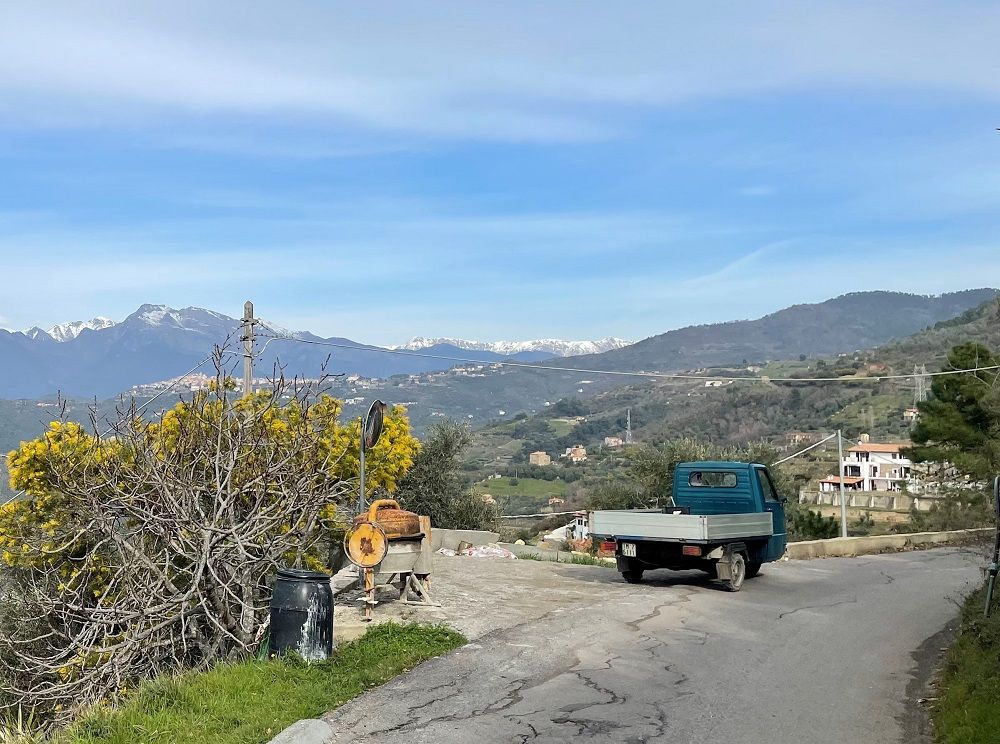The Marvel of Mimosa in Western Liguria
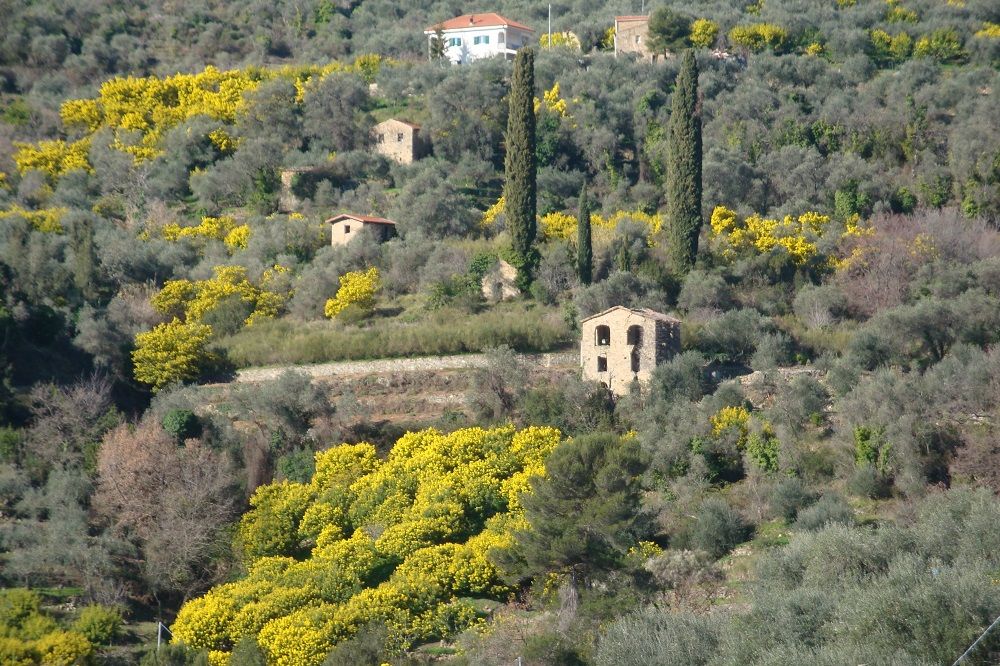
Here is where the landscape turns yellow at the end of winter. Did you know that 9 out of 10 mimosa flowers in Italy are produced in Liguria? Let’s journey into the mimosa groves of the far western Liguria. Yellow as yellow can be. Have you ever seen a mimosa tree in bloom? It’s as if a thousand canaries suddenly perched upon it. And a valley with blooming mimosa? A tide, an avalanche of yellow, a fleet of canaries. That’s exactly what happens in Liguria, in the province of Imperia, between Vallebona and Perinaldo, during the period from February to March. Coming from afar, but the mimosa has found its habitat in Liguria, to the extent of becoming one of the protagonists of winter. It’s a colourful celebration, a sprite that jumps from one slope to another, a yellow cry amidst the terraces where nature still sleeps. A desire for spring that opens the heart with hope in the midst of winter. Graziano Guglielmi lives in Vallebona, a small town in the immediate hinterland of Bordighera. He has been cultivating mimosa for thirty years. Every year, he eagerly awaits the end of January to immerse himself in yellow. His Ape (a three-wheeled vehicle) ventures into the heights of the village, amidst greenhouses, olive groves, and ancient rock churches. The engine wheezes as it conquers prohibitive slopes that seem to lead straight to the sky. After all, we are close to Perinaldo, the birthplace of the astronomer Cassini, and the sky in these parts holds a special relationship. “The beauty of the mimosa is delicate, ephemeral,” says Graziano. “The plant lives for maybe thirty years at most, then it fades, and you have to replace it. Plants aged thirty-two, thirty-five years can be considered old and will soon die. In recent years, perhaps due to climate change or intensive cultivation, mine have started to have problems. Sixty plants were planted here, now there are only thirty left…” The mimosa plant doesn’t last long, much like its flower. It’s all about the softness, the ephemeral delicacy of the flower, and the fragility of the plant. Yet, this is a quality of beauty, not meant to endure for long. However, in the Ligurian Riviera, mimosa has adapted very well; it has found what it was looking for: mild winters and dry summers, precisely what is needed to promote its flowering. “It’s a delicate plant, but with few demands; cultivating it isn’t difficult. It prefers cool, well-drained, acidic soils. Organic fertilizer is sufficient. Watch out for winds; its root system is rather poor. The recent storms in our area have toppled several trees; during windy nights, my mother and I are never at ease, always afraid that gusts might carry away some plants… and I want to go out to help them… but then in the morning, I find them still there, they have endured. As it happens with olives, the mimosa harvest has a touch of asceticism to it. Graziano remains alone for hours among his plants. Below him, down there, life flows peacefully in the narrow streets of Vallebona. He goes to work on a beautiful January morning, even though it’s cold, but one of those mornings with the sky painted completely blue. “I spread a sheet on the ground, then I start picking: first the larger branches. I make fairly large bunches, and when they reach about thirty kilograms, I can set up another sheet. It’s better to pick the mimosa a bit unripe; then it will be placed in a warm cell, where the temperature is maintained at 20°C, and it will ripen at the right moment. Right now, the cutting is rougher; once in the warehouse, I’ll choose the best branches and put them in water for 24 hours, and then into the cell.” To reach the highest branches, Graziano transforms into Cosimo Piovasco di Rondò, the Baron in the Trees: I get distracted for a moment and find him up in the trees. And his trees welcome him; he climbs confidently, almost as if they were offering him their branches. But in these parts, more than in the places of Italo Calvino, we are in those of Francesco Biamonti, a writer from San Biagio della Cima, author of four books that depict these places: L’angelo di Avrigue (1983), Vento largo (1991), Attesa sul mare (1994), and Le parole la notte (1998). Aloof, laconic, absorbed like one of his characters – people of the border, all with an absolute, dazzling destiny – many legends surround him, such as the one that he cultivated mimosa and tended olive groves. In reality, in an interview, he had admitted to resigning himself to the great frost of 1985, which had destroyed many of his mimosa plants because writing no longer left him time to cultivate them. “Cultivating mimosa for me was natural. My parents didn’t do this job, but they had some plots of land, and gradually I dedicated myself to it.” – Graziano Guglielmi” How many varieties of mimosa exist? How is it cultivated? “This is the Galuà, (in dialect, actually it’s called “Gaulois”), the most well-known, then there’s the “Chiaro di Luna”, the “Luna d’argento”, the “Denis Bodei”, and the Turnè (Tournaire), very similar to the Gaulois, but ripening a month earlier, and then another, highly demanded one, harvested unripe in September. For those who are not producers, it’s not easy to distinguish them; there are small variations in the leaf or the flower. Replicating a mimosa from seed is not easy; it’s preferred to graft the desired variety onto a more resistant wild one. There are people in the village who know how to do it well; we turn to them.” Graziano also confesses something to me that adds beauty to the mimosa: “Fortunately, mimosa doesn’t have parasites. Over these years, I’ve never used treatments with fungicides or pesticides, nor chemical fertilizers.” This way, you can rest assured that our gift for International Women’s Day won’t contain any kind of poison. To make it last longer, a few simple tips suffice: remove it from the plastic wrapping in which it’s given, soak it in clean water, preferably slightly acidified with the addition of a couple of drops of lemon. Place it in full light and in a humid environment, and spray fresh water on the flowers: mimosa releases a lot of water during transpiration, so the significant loss of liquid could cause it to dry out prematurely.” “In the village, there are still those who know how to graft mimosa. They are small growers. We seek them out when we need new plants.” We reach the ridge. To the west, you can see Perinaldo, with the snow-capped Alps in the background. Further on, more mountains, but it’s already France. On our way back down, Graziano takes a slightly longer route. He wants to show me a place that, he says, is beautiful when the mimosa is in bloom. These are narrow roads that venture among pine forests, vegetable gardens, villas, and Mediterranean scrubland, areas with names that evoke antiquity, like “Suseneo,” “Mergai,” “Massabò”; every now and then, from a curve, the sea of Bordighera appears. “Here, this place is called ‘paixe d’öji,’ the peace of the eyes,” he says.
Mimosa in Liguria
Originally from Tasmania, the Mimosa (or Acacia dealbata) arrived in Liguria in the 19th century and is now one of the most important factors in the floriculture market: more than 200 hectares are dedicated to it between cultivation and harvesting, and Ligurian production exceeds 90% of the rest of Italy’s.
Since 1946, mimosa has been the symbolic flower of March 8th, International Women’s Day. The choice was made in 1946, from an idea by Teresa Noce, Rita Montagnana, and Teresa Mattei, who proposed using mimosa, inexpensive and accessible to all, instead of violets, still given today in many other countries on the occasion of the celebration, but too expensive for a traditionally proletarian festival.The flowering and cultivation

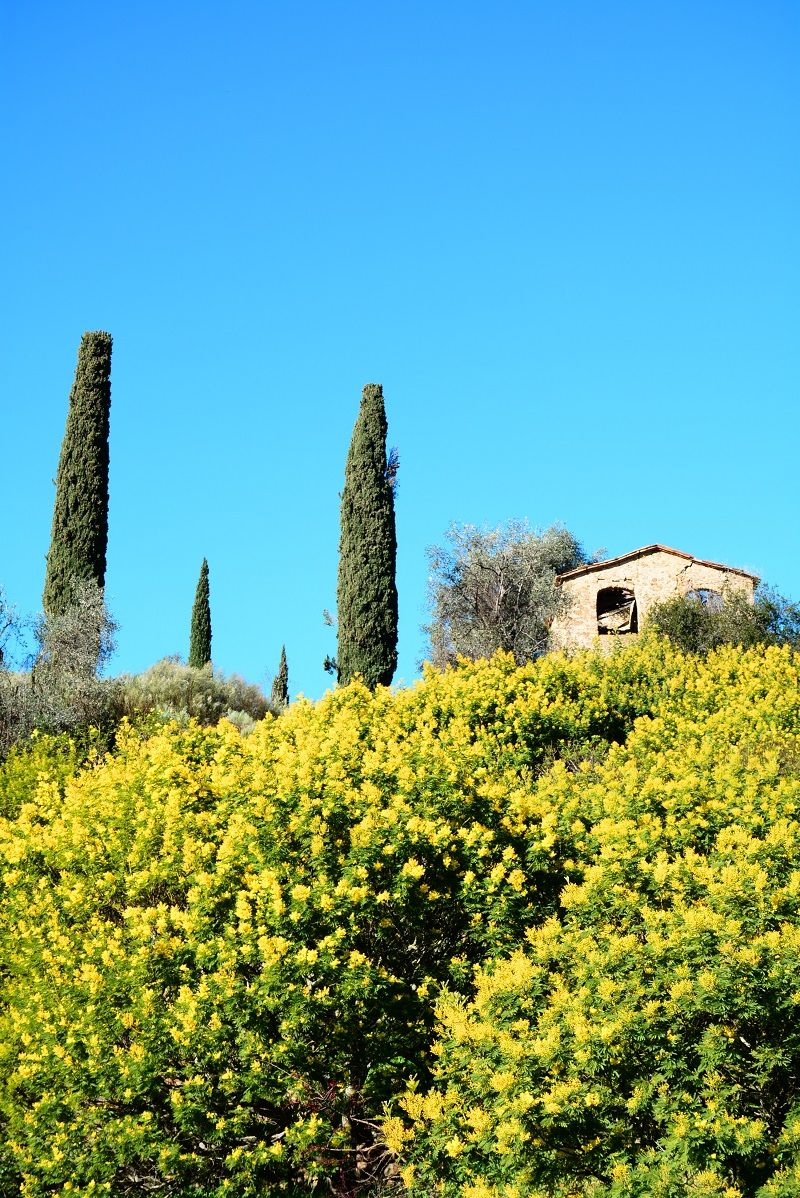
However, for it to bloom, the mimosa must suffer from thirst; this is also why it grows well in the Ligurian Riviera because it hardly rains here in the summer. I don’t prune: pruning is the harvest itself.”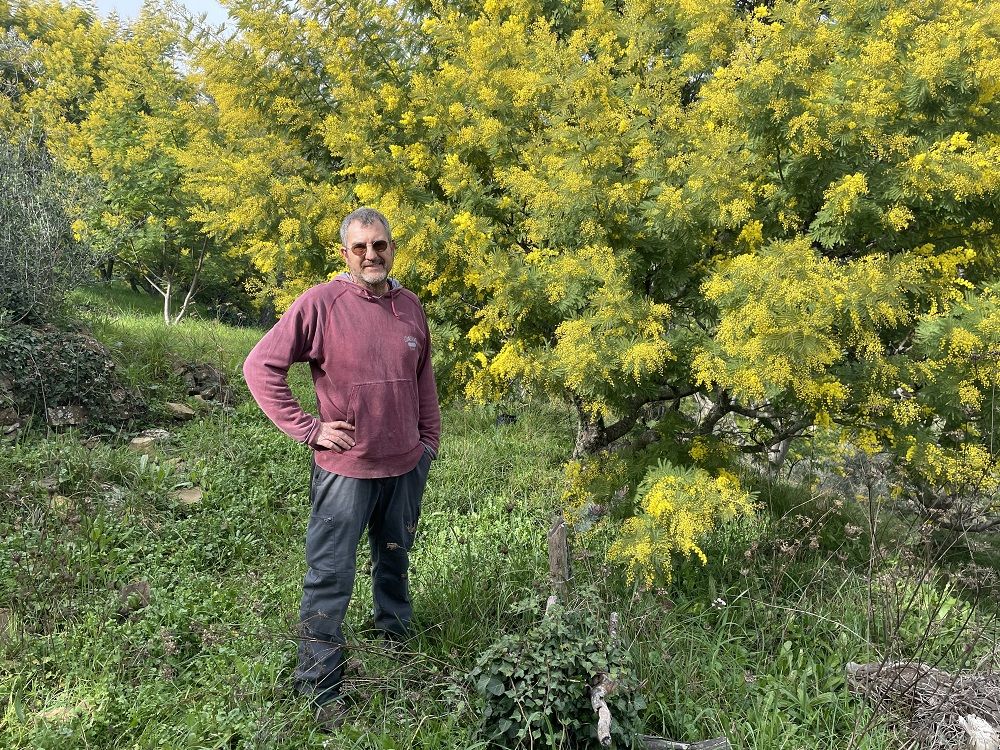
Among the rampant barons…
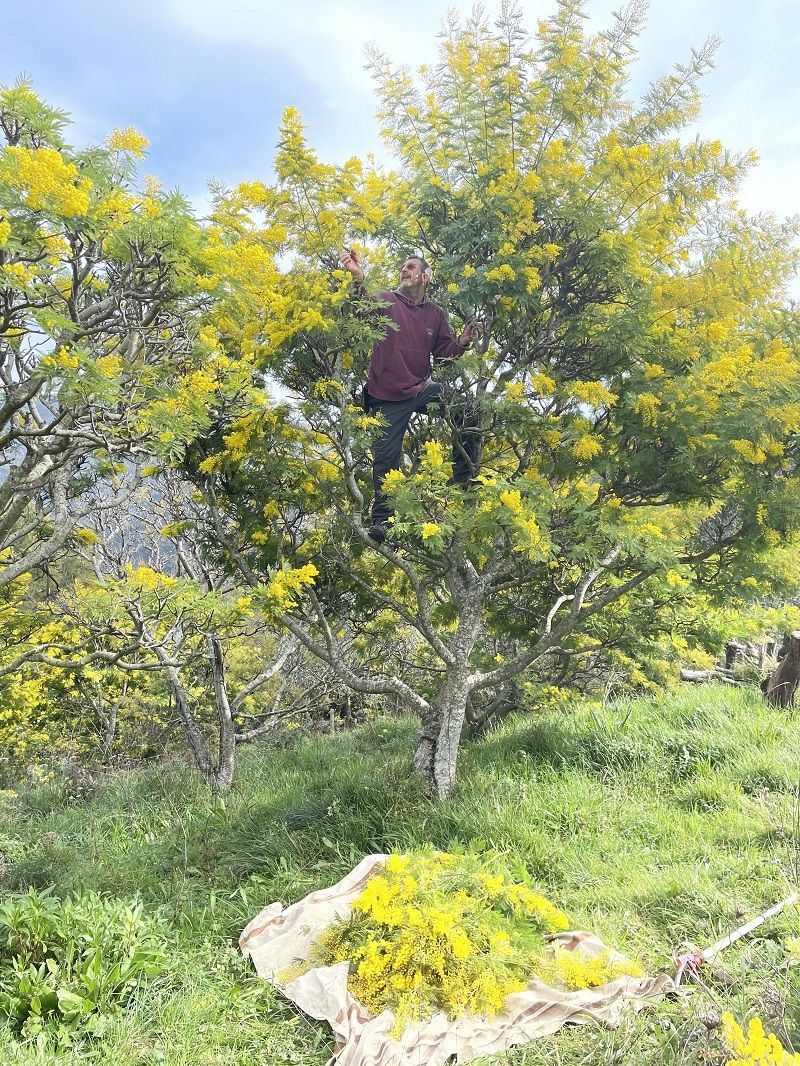

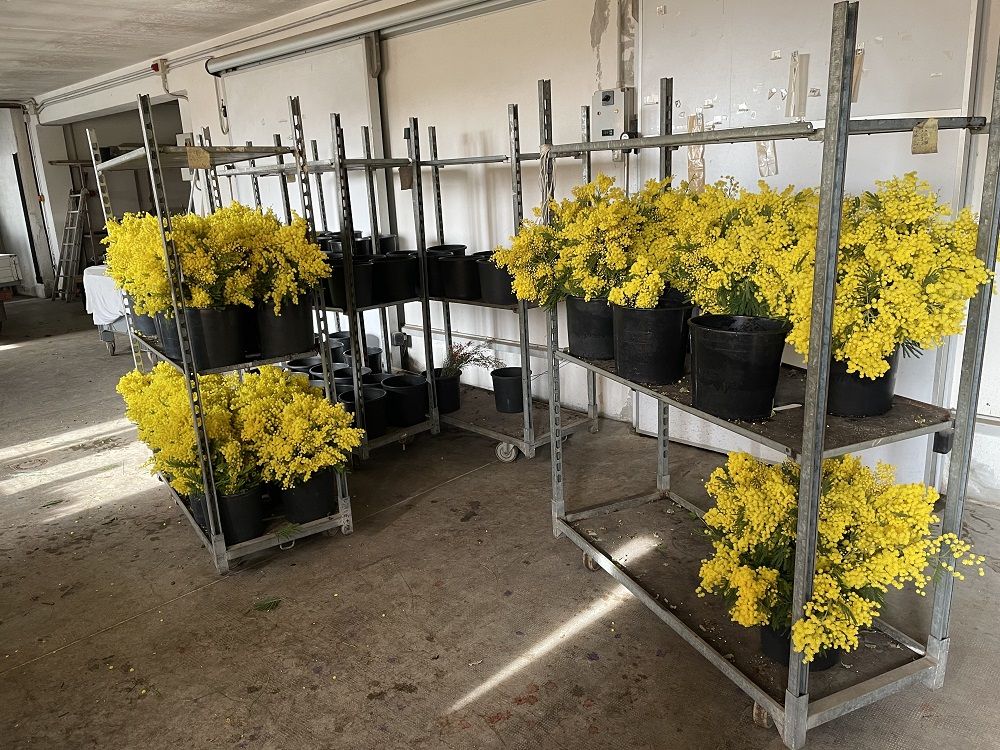
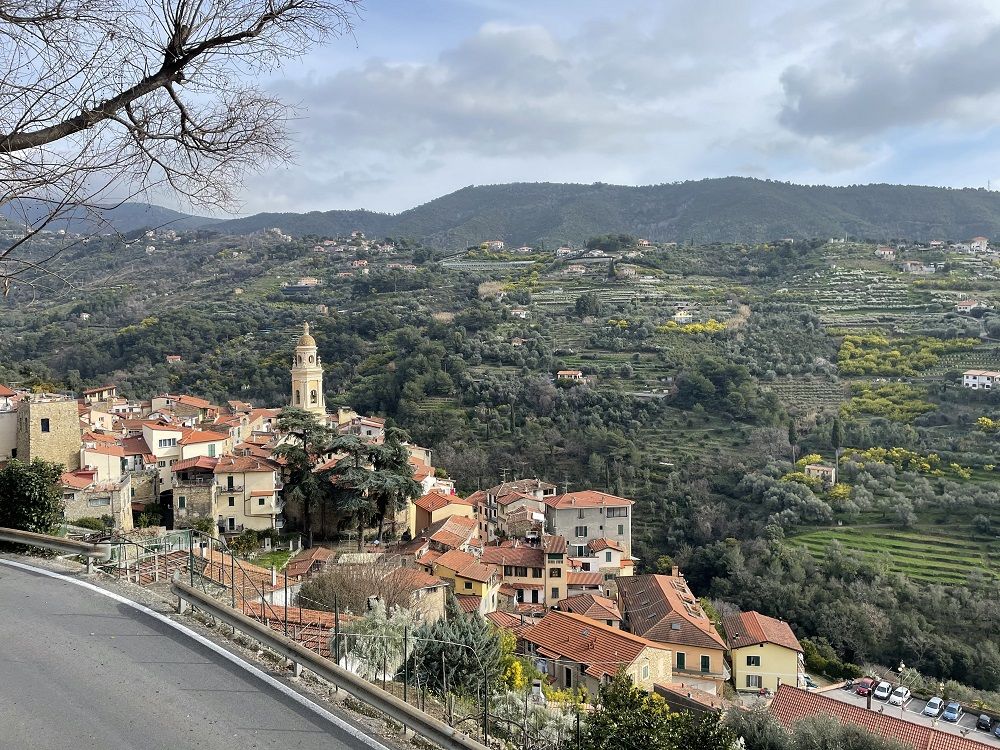
And indeed, the horizon lowers, the sea appears, a few sparse cypress trees point like a finger to the sky. It’s a good place to come and rest after a day of work.